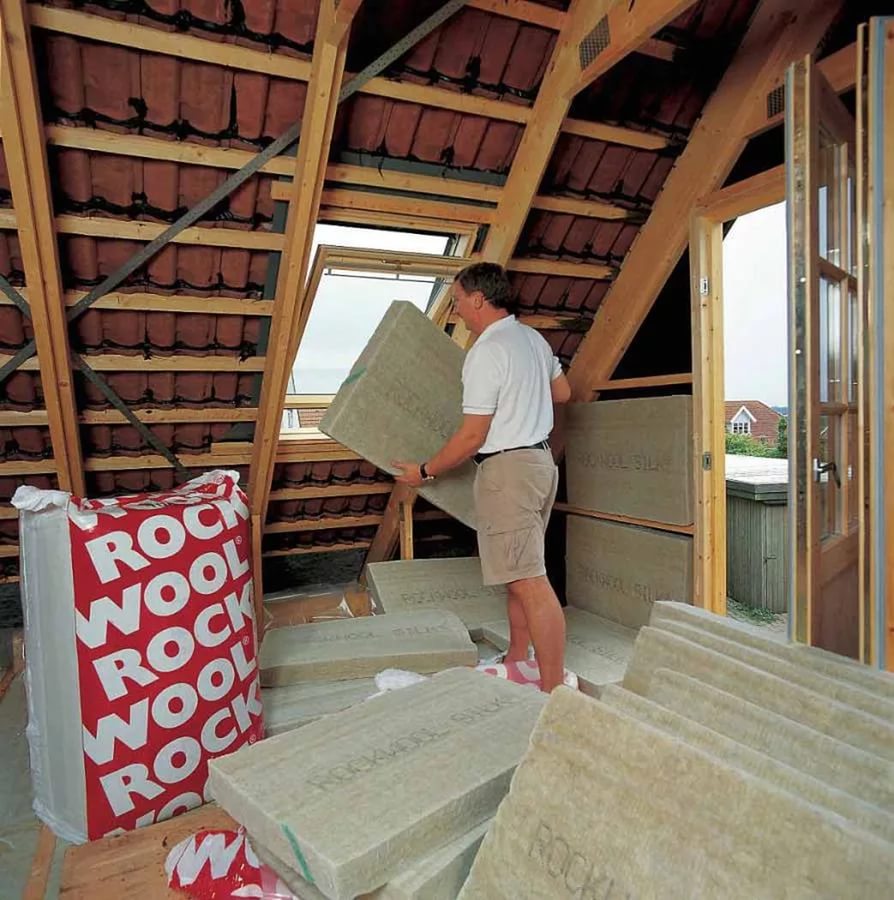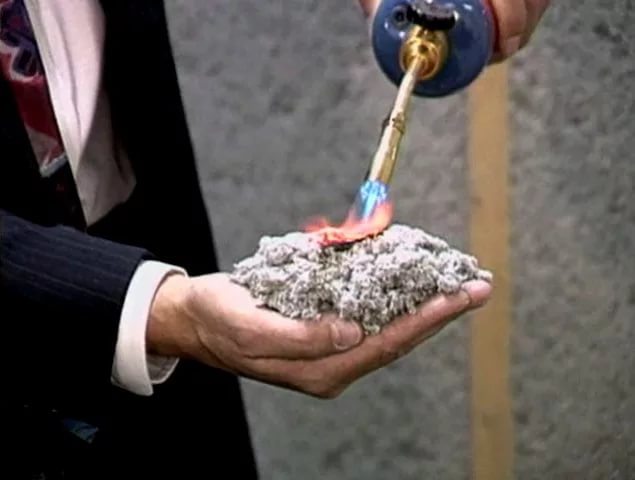Completed the second floor, but do not know how to insulate it? I will talk about the choice of insulation for the attic. And for dessert, we will consider 6 types of heat-insulating materials that are suitable for these purposes, get acquainted with their properties, advantages and disadvantages.
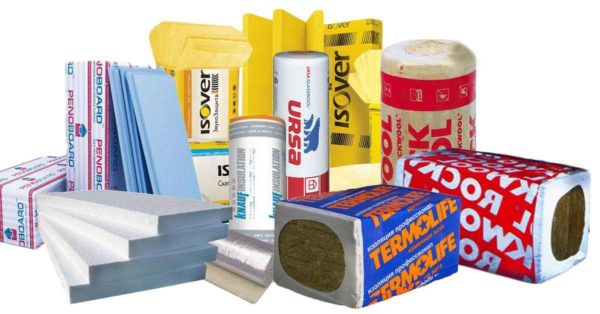
A few words about choice
First of all, let's figure out how to choose a heater? In fact, everything is quite simple, you just need to consider when choosing some important requirements for the material:
- Durability. In my opinion, modern material should serve for several decades;
- Environmental friendliness. The insulation must be safe for health - this is one of the main requirements;
- Efficiency. The higher the thermal conductivity, the greater should be the thickness of the insulation layer;
- Shape saving. Thermal insulation should not shrink so that cold bridges do not occur;
- Noise isolation properties. Especially important for roofs covered with steel materials (profiled sheet, seam roofing, etc.);
- Affordable cost. Often homeowners have limited budgets. Therefore, the price / quality ratio can play a decisive role in the choice.
Also keep in mind that all types of heaters that are suitable for attic insulation can be divided into two types:
- Slab. They allow you to perform the insulation of the mansard roof on your own, as they do not need the use of additional equipment;
- Sprayable. Attic insulation requires special equipment. Insulation in this case is carried out by specialists, which entails additional costs. This method of thermal insulation has its advantages, which I will discuss below.
Next, we will consider the properties and characteristics of materials of both types, and I will also give prices for them so that you can decide for yourself which insulation to choose for the attic.
Plate heaters
Plate heat-insulating materials include:

Option 1: mineral wool
Today it is the most popular mansard roof material that meets all requirements. It is a compressed fiber from the melt of rocks. The highest quality wool is made on the basis of basalt.
Unlike the well-known glass wool, which was widely used in Soviet times, basalt wool practically does not cause skin irritation and allergies. It is more environmentally friendly, and it is more comfortable to work with it.
Advantages of mineral wool:
- Fire resistance. Stone wool is the only slab insulation that does not burn, and is able to withstand exposure to high temperatures for a long time;
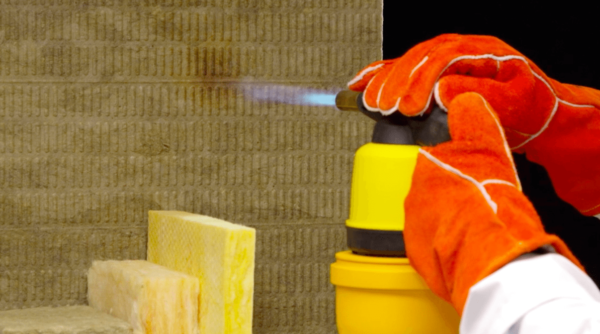
- Vapor permeability. The material passes steam well, as it has a fibrous structure. This property also favorably distinguishes mineral wool from most other plate materials.
At the same time, stone wool is much more moisture resistant than glass wool;
- Durability. Stone wool can last over 60 years;
- Environmental friendliness. The composition of stone wool does not contain formaldehyde and other components hazardous to health. True, this applies only to material from well-known manufacturers.

Flaws:
- Moisture absorption. According to this indicator, mineral wool is inferior to polymeric materials. Therefore, during its installation, a hydro-vapor barrier is always used.
In addition, when laying the plates, it is necessary to provide ventilation gaps that allow moisture to evaporate; - High price. Mineral wool is relatively expensive, especially for basalt wool.
Despite these shortcomings, in my opinion, mineral wool is the best insulation for a mansard roof. The only thing is that it just needs to be installed correctly.
Characteristics:
| Options | Meaning |
| Vapor permeability | 0.50-0.60 mg/(m*h*Pa) |
| Density | From 50 to 225 kg/m3 |
| Thermal conductivity | 0.032-0.047 W/(m*K) |
The density of mineral wool, as you can see, is different. To insulate a mansard roof, it is advisable to use a heater with a density of 90-100 kg / m3. It does not shrink and at the same time is effective in terms of thermal insulation.

Price:
| Mark and density | Cost in rubles per m3 |
| ROCKWOOL Plaster Butts 100 kg/m3 | 4000 |
| Izovol K-100 100 kg/m3 | 3600 |
| Steam 90 kg/m3 | 3600 |
| Basvul, 90 kg/m3 | 3900 |
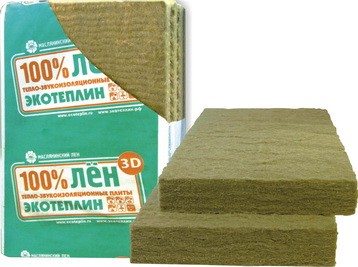
Option 2: ecoteplin
Ecoteplin is a board made from flax. Sometimes the insulation is made on the basis of hemp, sheep's wool or other natural materials. Outwardly, they are not much different from the stone wool described above.
This insulation can be recommended primarily to those who are trying to make their housing environmentally friendly. In addition to environmental friendliness, ecoteplin has other advantages:
- Efficiency. The thermal conductivity of ecoteplin is even lower than that of mineral wool;
- Vapor permeability. Like mineral wool, this material is classified as "breathable";
- Fire safety. Thanks to special impregnations, ecoteplin only smolders, therefore it belongs to low-combustible materials.
- Biostability. This quality is due to the use of impregnations in the manufacturing process of insulation.
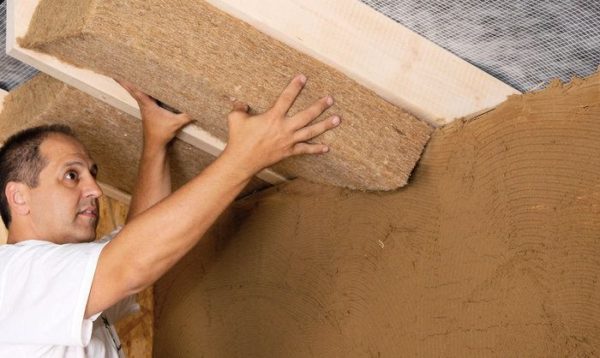
Flaws: Of the minuses of ecoteplin, it can be distinguished that it strongly absorbs moisture.True, the material dries quickly, and returns its thermal insulation qualities.
This insulation is quite rare in hardware stores. But it is easy to find it in online stores.
Characteristics:
| Main settings | Values |
| Density, kg/m3 | 32-32 |
| Thermal conductivity, W/(m*K) | 0,038 |
| Vapor permeability, mg/m*h*Pa | 0,4 |
Price. The price of ecoteplin averages 2500-3000 rubles. for 1m3.
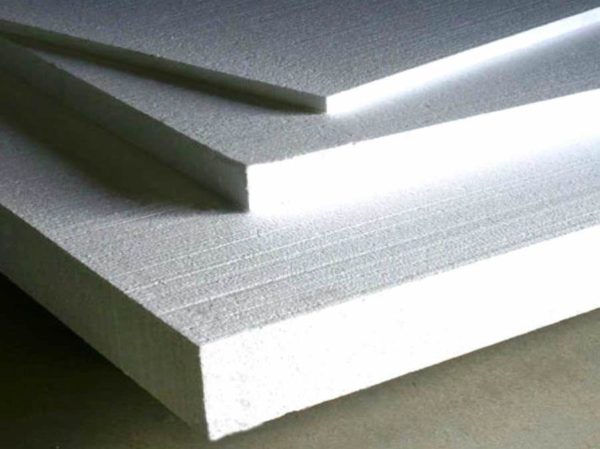
Option 3: Styrofoam
Styrofoam is a polymer plate insulation. It has a granular structure, consisting of small granules glued together. The latter are filled with air.
Polyfoam has been widely used due to its low cost. It is the cheapest not only among polymeric, but also in general of all existing plate heaters.
Advantages:
- Light weight. The maximum density does not exceed 35 kg/m3;
- Durability. Styrofoam can last up to fifty years;
- Efficiency. The thermal conductivity coefficient of this thermal insulation material is lower than that of mineral wool.
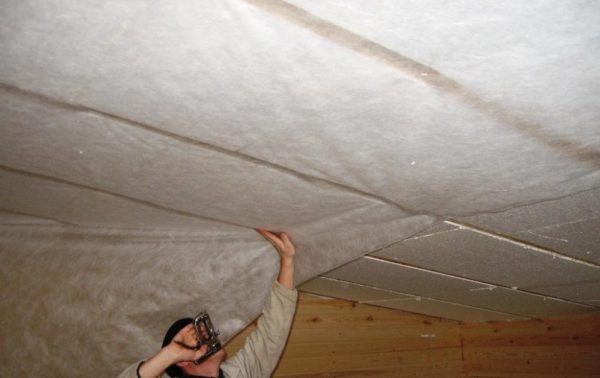
Flaws:
- Doesn't "breathe". When insulating, it is necessary to qualitatively protect the insulation and wooden structures from moisture from the inside. Otherwise, water will accumulate between the insulation and rafters or other wooden parts, which will cause them to rot.
I must say that this minus applies to all plastic materials, so I will not mention it further; - Flammability. In order to save money, manufacturers rarely add fire retardants to the composition of the foam, as a result of which it burns well;

- Toxicity. Under the influence of high temperature, polystyrene foam releases dangerous toxins;
- Moisture absorption. Styrofoam absorbs moisture quite strongly compared to other plastic heaters.
For these reasons, it makes sense to use foam only when the budget is very limited.
Characteristics:
| Options | Values |
| Thermal conductivity, W/(m*K) | 0,036-0,046 |
| Density, kg/m3 | 15-35 |
Price. The price of PSB-S-25 plates is about 2000 rubles. for 1 m3.
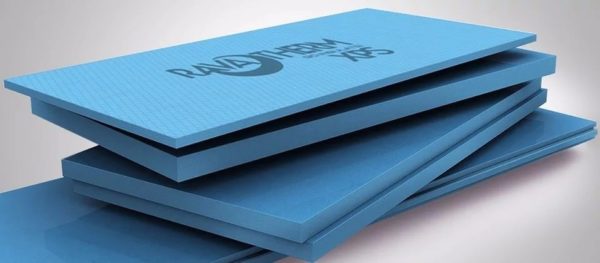
Option 4: foam
Extruded (extruded) polystyrene foam, or penoplex, is a polymer plate insulation made from the same raw materials as the foam. In its manufacture, a special technology is used, as a result of which this insulation is better than polystyrene foam in many ways.
Advantages:
- Strength. It has a more uniform structure, and has a higher density. As a result, its strength is about 10 times that of foam;
- Efficiency. The thermal conductivity is slightly lower than that of polystyrene, which makes penoplex one of the most effective heaters;
- Moisture resistant. This thermal insulation practically does not get wet;
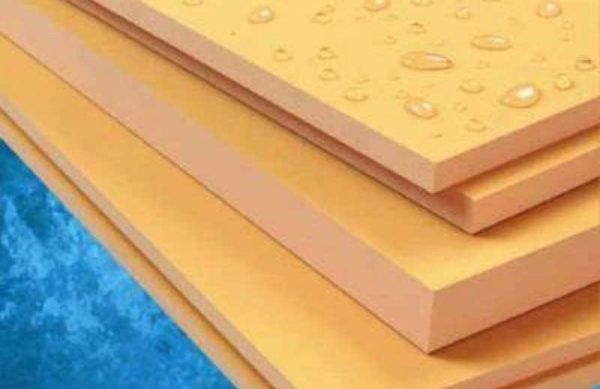
- Fire safety. As a rule, penoplex refers to low-combustible materials, which is achieved by adding flame retardants to its composition;
- Durability. It can last more than fifty years.
Flaws. Of the minuses, one can single out the high cost of this heater.
Characteristics:
| Options | Meaning |
| Thermal conductivity, W/(m*K) | ~0,028 |
| Density, kg/m3 | 28-45 |
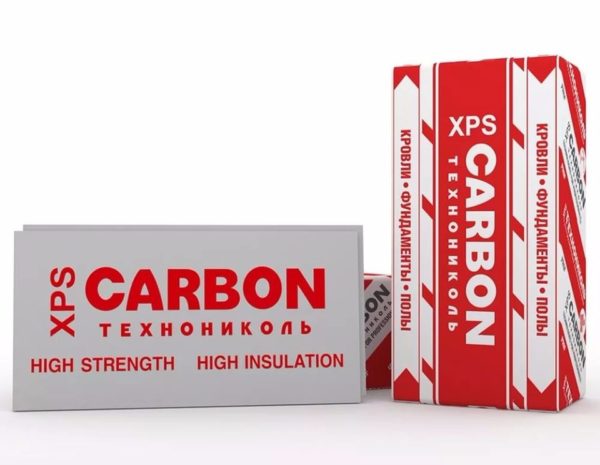
Price:
| Brand | Cost, rubles per 1 m3 |
| Penoplex | 5000 |
| TechnoNIKOL Carbon | 4600 |
| ursa | 3950 |
Spray materials
With sprayed materials, as I said above, it will not be possible to insulate the attic with your own hands. But on the other hand, they have one advantage over slabs - they are applied to the surface in a continuous layer. As a result, cold bridges are excluded, so there is also a certain sense in their use.
The sprayed materials include the following heaters:
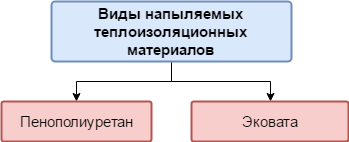
Option 5: polyurethane foam
Polyurethane foam is a polymer material that is sprayed in the form of foam. Like other polymer heat insulators, it has a cellular structure. Moreover, its cells are filled with gas.
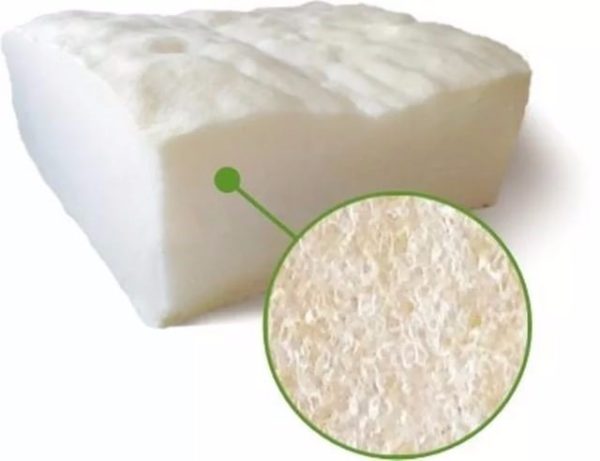
Advantages:
- Moisture resistance. This mansard roof insulation does not need a vapor barrier;
- Strength. After hardening, it forms a “shell” on the surface that is resistant to mechanical stress;
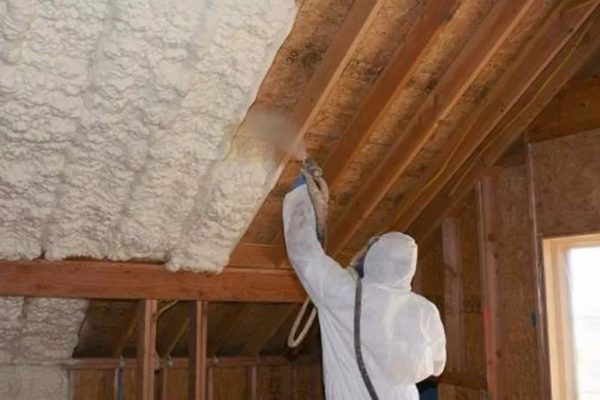
- Good adhesion. This allows you to spray polyurethane foam on any surface;
- Durability. Serves at least 30 years;
- Fire safety. Flame retardants are added to the composition of polyurethane foam.
Flaws:
- Difficulty of application. Warming must be carried out by qualified specialists. For such services, it is better to contact large companies without trying to save money;
- High price. This method of insulation is one of the most expensive;
- Toxicity. The foam has a strong toxic odor. True, after solidification, the material is absolutely safe for health;
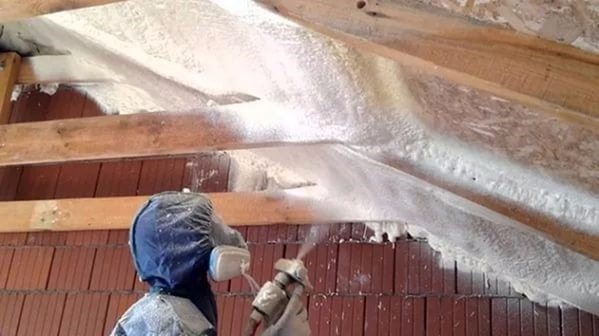
- Increase in thermal conductivity. The gas eventually leaves the cells and they fill with air. This leads to some decrease in the efficiency of the insulation.
Characteristics:
| Properties | Basic values |
| Thermal conductivity, W/(m*K) | 0.020-0.041 |
| Density, kg/m3 | 30-80 |
| Strength, MPa | 0,3 |
Price. On average, insulation of a square meter of surface with polyurethane foam costs 500 rubles.
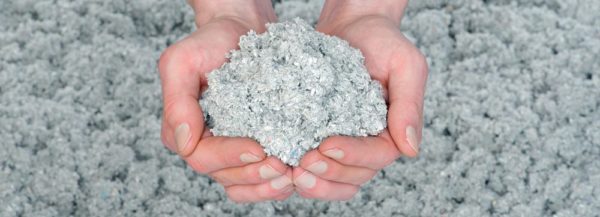
Option 6: ecowool
For those who want to make their housing environmentally friendly, ecowool is a good alternative to ecoteplin. This cotton wool is made on the basis of cellulose. As a rule, the raw material for it is newsprint.
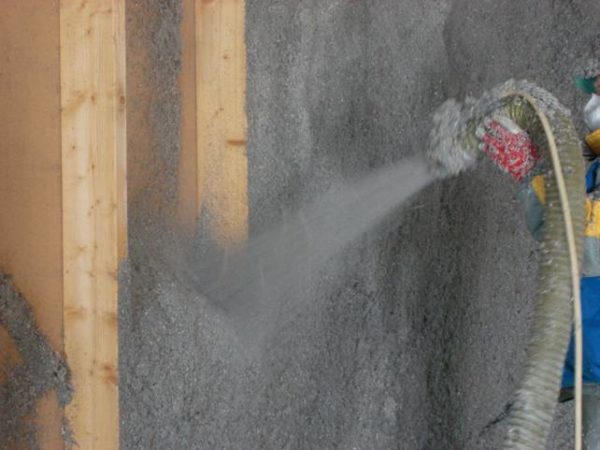
I must say that the insulation of the attic can be done in several ways:
- Wet spray method. In this case, the cotton wool mixed with the adhesive composition is supplied under pressure;
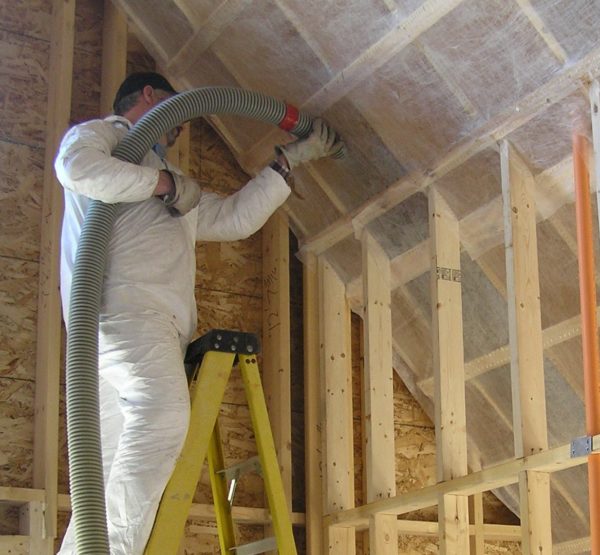
- Dry way. This technology is applicable only to frame structures, in particular, roof insulation can be performed in this way. Its essence boils down to wrapping the frame with a film, and filling dry cotton wool into the space of the frame through a hose;
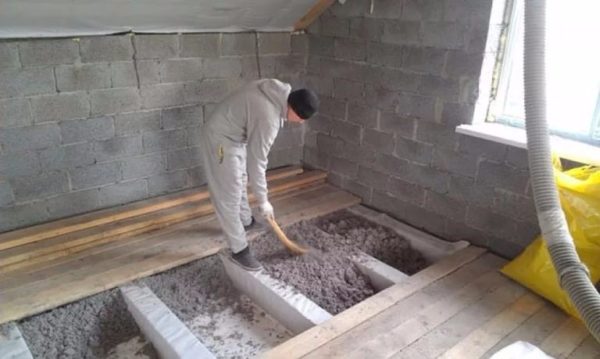
- Manual. This technology allows you to insulate only a wooden floor. The instructions for warming are extremely simple - cotton wool is simply poured between the beams and leveled.
Advantages. The main advantage of ecowool is its environmental friendliness. Also, the material has other advantages:
- Vapor permeability. According to this parameter, ecowool is not inferior to ecoteplin;
- Fire safety. Does not ignite;
- Biostability. Ecowool does not rot, rodents and insects do not start in it;
- Durability. This attic roof insulation can last more than 60 years.
Flaws:
- Dries for a long time. Cotton wool can dry out for several days;
- Shrinkage. May exceed 20 percent. Therefore, ecowool should be applied in excess;
- Moisture absorption. Cellulose wool needs high-quality waterproofing.
Characteristics:
| Options | Values |
| Vapor permeability | 0.30-0.67 mg/(m*h*Pa) |
| Density | 25-70 kg/m3 |
| Thermal conductivity | Up to 0.041 W/(m*K) |
Price. A cube of cotton wool, when insulated by spraying, costs an average of 2000 rubles, 15 kg of dry cotton wool costs about 500 rubles.
That's all I wanted to tell you about heaters. Also, I explained which one is better.
Conclusion
Now you know what insulation can be used for the attic and what characteristics and properties they have. Watch the video in this article for more. If some points are not clear to you, write comments, and I will definitely answer you.
Did the article help you?

